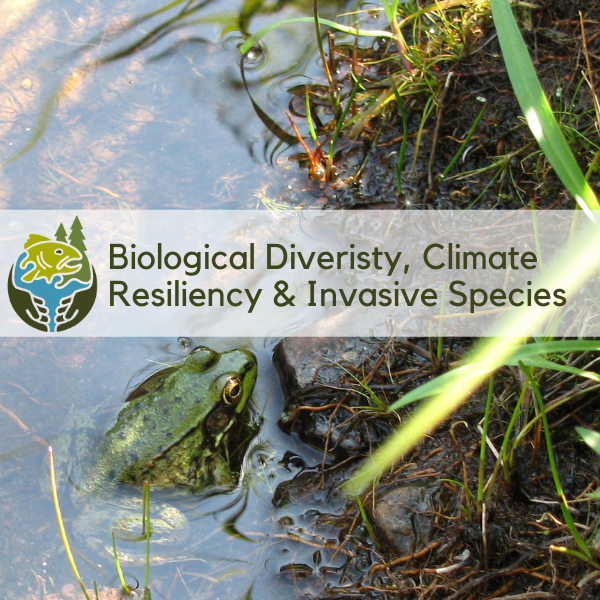This article was featured in the 2021 Autumn Newsletter by Rob Williams & Megan Pistolese-Shaw- SLELO PRISM.
According to the United Nations, invasive species have devastating impacts on native biota, causing decline or even extinction of native species, thus creating an imbalance of natural biological diversity (1). Additionally, invasive species are considered the second largest threat to biological diversity after habitat loss (2). Therefore, biological diversity becomes a vital factor in the ability of an ecosystem to remain healthy and to be resilient against stressors including invasive species and climate change. The work being done in New York through the Partnerships for Regional Invasive Species Management (PRISM) network aims to protect biodiversity and enhance resiliency.
There are volumes of literature that expose how invasive species reduce biological diversity. One such study, published in Global Change Biology, is the result of an expert survey on how likely global trends this century will affect the variety of life on Earth, its ecosystems, and – as a result – the lives of humans. An expert-based assessment found that a 20-30% increase in invasive species could cause massive global biodiversity loss (3). There are also many research summaries conducted by the Northeast Regional Invasive Species & Climate Change (RISCC) network that showcase the influences that climate change and invasive species have on biodiversity and ecosystem health. One summary, in particular, states that synergies between biological diversity and climate drivers will likely compound invader’s impacts in the future” (4) .
The impacts of invasive species can be seen in many forms, such as an invasive pest decimating an entire tree species in a forest, or an aquatic invasive species altering the trophic balance within a freshwater lake that leads to system imbalance. Protecting our lands and waters from the impacts of invasive species helps to maintain the diversity
of the flora and fauna that support the many important functions of an ecosystem. Furthermore, if we genuinely seek to keep our lands and waters healthy and resilient to future stressors, then we must go beyond the management of invasives and make restoration and resiliency a top priority in our invasive species work.
An example of restoration and resiliency work currently underway within the SLELO region focuses on three eastern Lake Ontario tributaries: Deer Creek, Sandy Creek, and Little Sandy Creek. In each system, we are re-establishing streamside native flora that we believe will help to make these systems more resilient to a changing climate by using diverse native plants to shade and therefore cool lentic water temperatures. In each case, populations of invasive plants (Phragmites australis) and/or (Fallopia japonica) have been eradicated or greatly suppressed. Another example is our Salmon River Initiative where 8.68 acres of streamside (Fallopia japonica) were suppressed followed by the re-establishment of native grasses, live staking of shrubs, and planting of native tree seedlings. These types of projects help to cool stream edge water temperatures.
Through prevention, avoided impacts and improved management, we can achieve a goal to create and sustain more resilient, climate adaptable connected land and waterscapes at a scale that includes but moves far beyond our backyards. New York’s PRISM network is in a unique position to lead the way towards preventing and managing invasive species well beyond backyard conservation. The work being done through this network has the power to restore impacted ecosystems and enhance the health of largescale connected land and waterscapes.
RESOURCES
- Tackling Biodiversity & Climate Crises Together and Their Combined Social Impacts – United Nations Sustainable Development
- Update on the environmental and economic costs associated with alien-invasive species in the United States – ScienceDirect
- Lenzner and Essl, 2020. Drivers of future alien species impacts: An expert‐based assessment-Global Chance Biology
- Mainka, S. A., & Howard, G. W. (2010). Climate change and invasive species: double jeopardy. Integrative Zoology, 5(2), 102-111.


